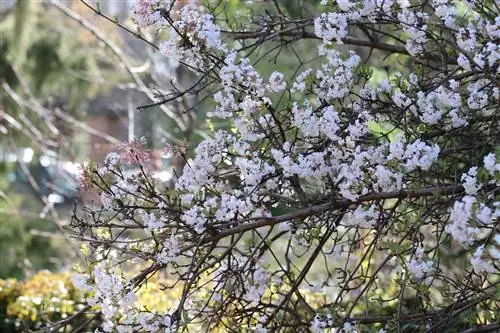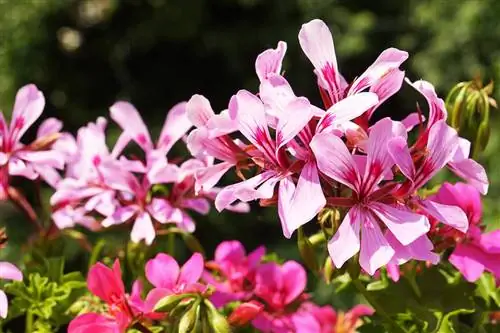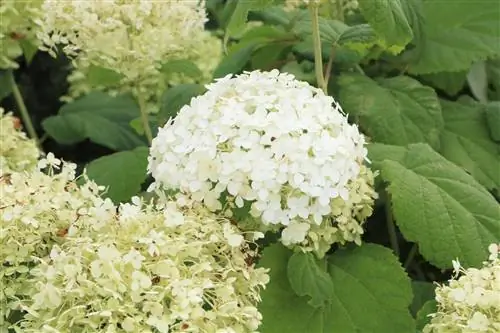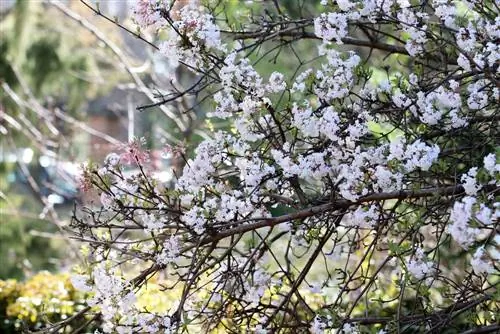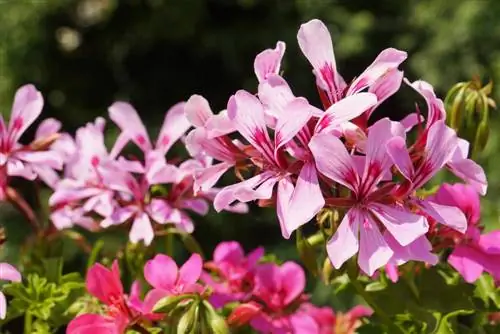- Author admin [email protected].
- Public 2023-12-17 03:39.
- Last modified 2025-01-24 12:45.
The scented snowball Viburnum farreri is an easy-care deciduous shrub with spreading branches. With its delicate pink to white, fragrant, spherical flowers or its magnificent red berries, it is a real eye-catcher in the garden. The scented or winter snowball needs a lot of light and a lot of water but is otherwise an easy-care, grateful shrub that is also suitable for garden beginners.
The scented snowball is native to the northwestern Chinese provinces and, depending on the species, reaches a height of 1 to 5 meters. With more than a hundred species, the snowballs (Viburnum) form a very large genus within the musk herb family (Adoxaceae) and are planted as hybrids in parks and gardens as ornamental plants. Snowballs look particularly beautiful together with other flowering shrubs, such as rhododendrons and lilacs, which bloom around the same time. The scented snowball also shows an attractive contrast in the background of bright perennials such as delphiniums, bee balm or phlox.
Growth & Flowering
The winter-blooming, tightly upright shrub is well suited for narrow hedges. The first flowers appear from October to December. The milder the temperatures, the richer and earlier it blooms. Until March it shows pink-white inflorescences in terminal umbrella panicles with a wonderfully strong scent. The “Dawn” variety is dark pink and fades to a pinkish white. The scented snowball grows as a deciduous shrub or small tree and reaches up to four meters in height and width. In spring, maple-like leaves appear on its branched branches.
Wintering
As a real winter bloomer, the scented viburnum is naturally hardy and does not need any additional protection. However, care must be taken to ensure that the substrate does not freeze through, as it requires a constant supply of water.
Substrate & Soil
The scented snowball is completely undemanding when it comes to its surface. Normal, but always moist garden soil, which does not need to be fertilized, is completely sufficient.
Location
- Sunny to partially shaded locations are recommended.
- The scented snowball likes to be in full sun for a few hours, but in an otherwise well-protected place, such as near a wall or in front of a hedge.
- Attention: The open flowers cannot tolerate severe frost.
Plants
- The scented snowball is planted in spring or autumn.
- For row plantings, the planting distance is at least one meter.
- In very mild climates, the scented viburnum can also be kept as a container plant.
- Since new roots and shoots are constantly forming, frequent pruning and, if necessary, dividing the plant are necessary.
Pouring
The winter or scented snowball needs a constantly moist or even wet soil. During dry periods, ensure that there is sufficient water supply. The rule of thumb is to water every two weeks. For potted plants, you should pay attention to freezing in winter and drying out quickly in summer.
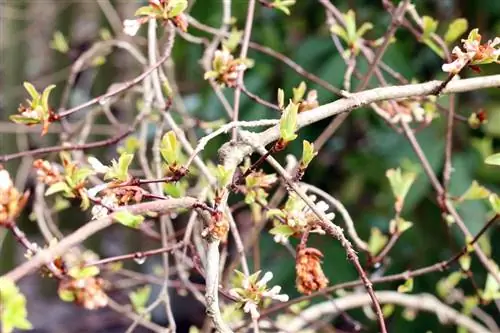
Fertilize
The viburnum can be supplied with nutrients using a commercially available garden fertilizer, but it does well in normal garden soil even without fertilizer.
Cutting
The rejuvenation cut is not just a mere “formality” with the scented snowball. Thinning stimulates the plant to produce new growth and fresh shoots. The scented or winter viburnum and the common viburnum are best rejuvenated in March, immediately after flowering.cut into shape. In contrast to topiary pruning, rejuvenation pruning requires a little more preparation and planning. If the scented snowball is a solitary plant in a pot on a balcony or terrace, it must also be consistently thinned out and shaped. Crossed branches, dried out wood and faded inflorescences are regularly removed to maintain the well-groomed appearance of the plant.
Technique of rejuvenation cut
The rejuvenation cut requires some planning at first. Every year the branches to be cut back are re-determined so that the old bush is completely cut back within a period of three to five years. So if the shrub needs to be rejuvenated within three years, 1/3 of the branches are cut back in the first year, half of the branches left in the previous year in the second year and the remaining branches of the viburnum in the third year. Rejuvenation cutting begins not with the outer branches, but with the branches in the heart of the bush, which are cut to a height of 30 to 40 cm. The scissors are placed as short as possible above an eye that “looks outwards”.
After a radical cut, the scented viburnum may not bloom the next year because the plant is very tolerant of pruning, but only blooms on two-year-old wood. However, a regular annual rejuvenation cut is often enough to keep the plant in shape and encourage new growth.
Propagate
The scented snowball is propagated using cuttings cut in summer: Since the scented snowball requires regular cuts and can also be cut back radically, numerous cuttings are produced from which new specimens can be grown. The cuttings are placed in the ground and watered generously until they are rooted. The scented snowball can also be propagated using planters. To do this, the shoots that grow laterally are pressed into the ground and covered with soil that must be kept evenly moist. If roots have formed, the sinker can be separated from the plant with a sharp knife.
Another way to propagate is to divide the plant. The scented snowball forms many root runners that can be separated from the mother plant in spring and replanted.
Diseases
The robust scented snowball is already well protected against diseases. As a preventative measure, however, the shrub can be sprayed with field horsetail broth every two weeks in spring to harden it against pests.
Pests
If the scented snowball is attacked by aphids, the only thing that usually helps is a special insecticide from a specialist retailer. The consequences of an aphid infestation can be seen in stunted leaves and even a complete failure of flowering.

What you need to know about caring for the scented snowball in brief
Before you plant a scented snowball in your garden, you must first look for a suitable location. This should be chosen carefully so that you can enjoy the plant for a long time:
- Therefore, choose a protected location that, if possible, is either in front of a wall, a house wall or a hedge.
- The soil should also be kept moist. The scented snowball thrives best if you plant it in a partially shaded place.
- It would also be good for you to know that the scented snowball is also hardy because it is one of the winter bloomers.
If you want to propagate the scented quickball, you should also consider a few criteria here: Basic knowledge also includes that you propagate the plant using lowering plants. When the shoots touch the earth, it's time for you, because then they start to take root right there - as the saying goes. If possible, only use young shoots for propagation. As an alternative, you can also cut cuttings and insert them in their designated place.
- It is not absolutely necessary to cut the scented snowball. It is enough if you remove the spent flowers and remove any damaged shoots. If desired, you can make small topiary cuts.
- The scented snowball can be watered every 14 days - but only if the soil around the scented snowball is really dry. Then water the plant generously.
- If you have the scented snowball in a bucket, it will need water more often. But then only in small quantities. Therefore, check regularly whether the soil is quite dry.
- If the plant loses more leaves, this is usually a sign that it is too dry.
- You can fertilize the scented snowball every now and then. For potted plants, use long-term fertilizer in granular form and for soil plants, simply enrich the soil with a little humus. The best time for this is towards the end of winter.
- Also pay attention to possible pest infestation when caring for it. Leaf beetles, which eat the leaves of the plant, are particularly important here. If there are only individual animals on the plant, you can easily read them. If the infestation is severe, you will have to resort to chemical agents and fight the beetles with insect poison.

